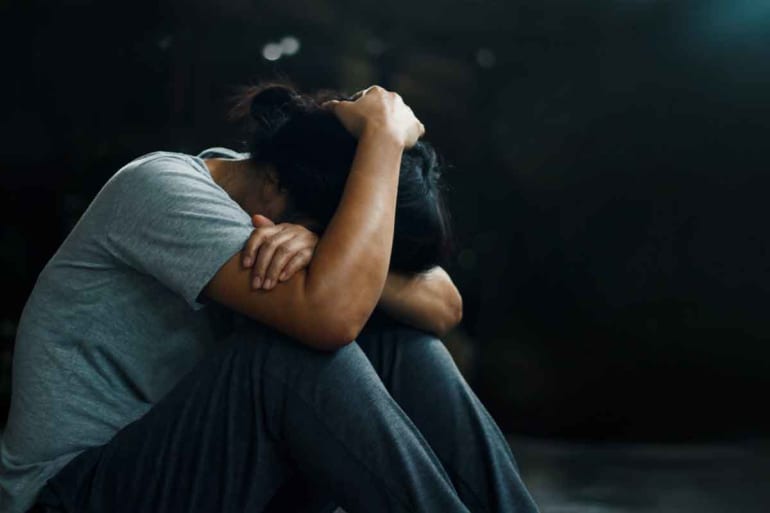Post Traumatic Stress Disorder is a mental disorder that develops after experiencing a distressing, frightening, or stressful event. Unlike many other disorders, it is not one that you are born with; it only comes as a result of exposure to a traumatic experience.
Throughout your life, it is common to go through periods where you experience upsetting and traumatic events. You may also have episodes where events put you on edge and it affects everything in your life. You may have trouble eating, sleeping, and functioning in your daily life. In most circumstances, you are able to work through those trying times and move on. However, if those feelings linger and it is severely impacting your daily life, you may be suffering from post-traumatic stress disorder (PTSD).
PTSD is commonly thought of occurring in people who serve in the military after prolonged engagements in battle or wars. However, anybody can experience this debilitating mental condition. It is estimated that 7-8% of the American population will experience PTSD sometimes in their lives. Additionally, 10 percent of women will experience PTSD in their lifetime, compared to 4 percent of men.
This article will give you a better understanding of PTSD, the symptoms, and proper ways to treat the illness.
Diving Deeper Into Post-traumatic Stress Disorder
Experiencing fear as a result of a stressful event is a common response. Fear is a learned response, a helpful mechanism that helps you avoid situations that are potentially dangerous or harmful to you. You might fear heights as a result of a long fall as a child or the ocean if you found yourself pulled into a rip current and felt like you couldn’t escape.

When exposed to a distressing or dangerous situation, your body experiences something you’ve very likely heard of already: “fight or flight response.” This sudden surge of adrenaline through your system gives you the ability to handle situations you might not be able to in everyday conditions.
Living with some fear is normal and healthy. Your fight or flight response helps you manage situations to keep yourself safe. But once the event passes and some time has elapsed, these responses lessen.
However, some people experience or live through certain atrocities and their fight or flight response, or extreme fear, do not decrease. These individuals feel on edge nearly all of the time, whether or not they are in danger. This can often impact their ability to function normally. Those who do not lose their sense of fight or flight after a traumatic event are
usually diagnosed with Post Traumatic Stress Disorder.
What is PTSD
PTSD is a psychiatric disorder that can occur when one experiences or witnesses of a life-threatening events. These can include military combat, natural disasters such as earthquakes and tornadoes, terrorist incidents, serious and life-threatening accidents, or physical or sexual assault. Those who are afflicted with PTSD will often relive those traumatic experiences through vivid nightmares and flashbacks. As a result, they have tremendous difficulty sleeping, and they feel emotional flat and detached from everyday life.
People with PTSD will experience three types of symptoms:
- Re-experiencing symptoms—these are related to reliving the traumatic event or events.
- Avoidance and numbing symptoms—these occur when those affected start avoiding people, places
and things connected to the event and the resulting emotional numbing or disconnect of feelings to their daily lives. - Arousal symptoms— those with PTSD always feel they need to be “on alert” at all times in their surroundings. If they sense things in the environment or in their interactions with people, it creates a flight or fight response.
PTSD Causes
What types of events cause this extreme sense of fight or flight mode at all times? There are many different experiences that people go through to develop PTSD. There is not a one-size-fits-all cause of Post Traumatic Stress Disorder. Some are able to handle more stress than others before reaching the “breaking point.”
Some events of PTSD causes include:
- Exposure to war, either as a soldier or a civilian
- Car accidents
- Sexual assault or prolonged sexual abuse
- Violent personal attacks, such as robbery or mugging
- Severe neglect, especially during developmental childhood years
- Witnessing a violent attack or murder
- Being kidnapped or held hostage
- Natural disasters like severe earthquakes, floods, or fire
- The sudden death of a loved one, such as a family member or close friend
Not everyone who goes through one of the above experiences develops PTSD. At the same time, developing Post Traumatic Stress Disorder does not make you “weak” or unable to handle stress. PTSD causes are extreme events that affect everyone who goes through them in some way or another.
Symptoms of Post Traumatic Stress Disorder
Having some leftover nerves or fear after a stressful or dangerous event is normal. When these symptoms last longer and start to carry into your everyday life, though, PTSD might be present. In order to receive a PTSD diagnosis, you must experience all of the following symptoms for at least one month:
- At least one experience of “re-living” the traumatic event
- A minimum of one symptom of avoidance (to minimize the chances of the event happening again)
- At least two symptoms of arousal or reactivity (where the fight or flight response is triggered and activated)
- A minimum of two symptoms of impacted cognition and mood
If you already have depression or anxiety, you have higher chances of developing symptoms of PTSD. Depression and anxiety make life difficult to manage to begin with. After going through a scary or dangerous experience, those symptoms are often magnified. Many times the event magnifies these existing symptoms. These extreme symptoms often manifest into Post Traumatic Stress Disorder.
How PTSD Is Diagnosed
PTSD is diagnosed in people based on the signs and symptoms that are manifest through a comprehensive evaluation. To meet the diagnosis of PTSD, it requires exposure to an event that involved or held the threat of death, violence or serious injury whether experienced directly or witnessed. Additionally, people need to experience symptoms such as vivid and upsetting dreams, frequent flashbacks, and severe emotional distress. It is important to note these symptoms are still prevalent after one month of the traumatic event. If emotional numbness and distress, trouble sleeping and increased and violent emotional outbursts occur, a diagnosis of PTSD is often made.
However, it is important to note that the diagnosis must be thorough. Misdiagnosis is common, and there are numerous disorders the share similar characteristics with PTSD. These can include the following:
- Acute stress disorder (ASD)
- Bipolar disorder
- Depression
- Obsessive/compulsive disorders
Additionally, the diagnosis of PTSD can be difficult because of the overlap in symptoms.
Can PTSD Be Cured?
Post Traumatic Stress Disorder does not have to last forever; there are a number of treatments for PTSD causes and symptoms. Therapy with an emphasis or focus on recovery from trauma is often the most effective course of treatment. Some of the types of trauma therapy used to help people struggling with PTSD are:
- Eye-Movement Desensitization and Reprocessing Therapy (EMDR)
- Cognitive Processing Therapy (CPT)
- Prolonged Exposure
- Narrative Exposure Therapy
Medication can also be a helpful addition to therapy. Antidepressants are often used to keep symptoms at a manageable level while working with a therapist. They encourage a more positive outlook as well as increased activity levels to keep the individual going during treatment.
Getting Help For PTSD
Almost all people who develop PTSD need to seek professional help from reputable facilities that feature specialized programs that deal with this traumatic condition. In many cases, the stigma attached to mental illness causes people to suffer in silence. In order to cope, many turn to substances. However, this “quick fix” does not address the root causes of the issue. In many cases, people will also develop substance abuse problems in addition to PTSD.

Facilities that specialize in treating PTSD feature dynamic individual and group therapy. Also, they feature effective therapies such as cognitive processing therapy and exposure therapy to help people confront and work through their issues in a safe and supportive environment. Additionally, these facilities feature medication therapies and other interventions.
Get Help Today!
If you or a loved one need help, call Hawaii Island Recovery toll-free right now.
866-390-5070 Hawaii Island Recovery
Hawaii Island Recovery 










